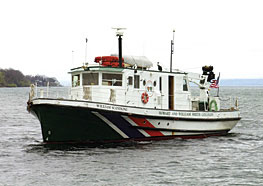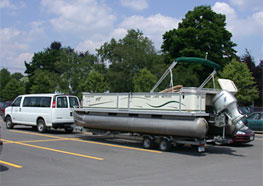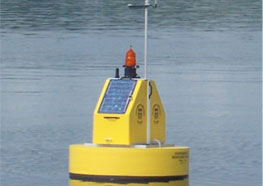Facilities
The Aquatic Sciences Program faculty and their labs are housed in Lansing, Eaton and Rosenberg Halls.
These spaces form the natural science complex. The complex sits in the center of campus just a short walk from the library, residence halls and dining facilities. The teaching and research labs are associated with the faculty member’s home department, Biology, Chemistry, Geoscience, Physics and Math/Computer Science. A detailed listing of the geoscience lab space is below. Other labs, e.g., the Aquatic Biology Lab and the Aquatic Chemistry lab are in Eaton and Rosenberg Halls, respectively.
- Geochemistry/Limnology Lab contains instrumentation for the chemical analysis of water samples collected routinely from lakes and streams in the Finger Lakes region under the supervision of Professor John Halfman. The lab is equipped with refrigerators for temporary sample storage, drying oven and two UV spectrophotometers, used to measure nutrient and chlorophyll concentrations in lake and stream samples. The lab also stores portable pH/temperature/specific conductance/dissolved oxygen probes, Hach titration kits, a Marsh-McBirney flow meters, and ISCO stream sampler are used to make field measurements.
- Geochemistry/Sedimentology/Paleoclimatology Lab is a wet/dry lab equipped for the routine investigation of water, sediment, and rock overseen by Associate Professors Tara Curtin and Dave Finkelstein. There is ample lab bench space for sample preparation in ductless or chemical fume hoods for wet chemistry work. The inner analytical lab room houses the elemental analyzer, laser particle size analyzer (requires a continual supply of DI water to operate), cavity ring-down spectrometer, and a microbalance.
Hanley Biological Field Preserve
The Henry Hanley Biological Field Preserve, located about 15 miles from campus, is a 108 acre site owned by the Colleges and operated by the Biology Department.
The gently sloping sanctuary has over 60 natural and man-made ponds. The major vegetation types include agricultural fields, deciduous forest, old field/scrub and a small stand of pines.
The preserve also hosts a wide diversity of plants and animals, including whitetail deer, coyotes, red fox, beaver, mink, muskrats, redtail hawks, great blue herons, green herons, Canada geese and many species of ducks.
The Richard A. Ryan Field Station is located on the preserve and serves as a base for conducting ecological research and as a classroom during rainy weather.
The R/V William Scandling

The steel heeled, 65 ft., research vessel has access to various lakes including Seneca, Cayuga and Ontario for student and faculty classroom and research activities. The R/V William Scandling is used regularly by introductory and upper-level courses offered by Geoscience faculty.
The boat is fully equipped for sediment, water, and biota studies. This equipment includes a stereomicroscope, a binocular microscope with camera, and CTDs for determining temperature, salinity, chlorophyll concentration, transparency, pH, and dissolved oxygen content of the water column. Sediment sampling gear includes a ponar dredge and various gravity and piston corers. Additional instrumentation deployed using the research vessel includes high resolution seismic profiling and side scan sonar equipment, along with sediment traps, acoustic Doppler current profilers, and sediment traps.
JB Snow

A converted stock pontoon boat has become a capable research platform that can be towed overland and launched from a typical boat ramp. The vessel, JB Snow, is a complement to the Colleges’ 65-foot research vessel The William Scandling. The JB Snow has the ability to collect limnological data, detailed bathymetric data, sediment samples and deploy and/or tow geophysical and other remote sensing equipment.
Seneca Lake Data Buoy

An automated buoy is maintained in Seneca Lake at a mid-lake location offshore of Clark’s Point (Latitude: 42° 49.13′, Longitude: 76° 57.61′) with a water depth of 60 meters. The YSI EMM-2500 Buoy Platform has cellular modem communications and includes meteorological sensors to measure wind speed & direction, dewpoint temperature, air temperature, barometric pressure, and solar radiation. The buoy platform also includes a water quality profiler to measure depth, temperature, conductivity, turbidity and chlorophyll-a. The most recent and archived measurements from the buoy are available here.
The Finger Lakes Institute

The Finger Lakes Institute (FLI) at Hobart and William Smith Colleges is dedicated to the promotion of environmental research about the Finger Lakes and surrounding environments. The institute, located on campus, offers a variety of programs each semester. To learn more about the variety of ways students integrate FLI into their educational programs, visit the FLI’s website.
